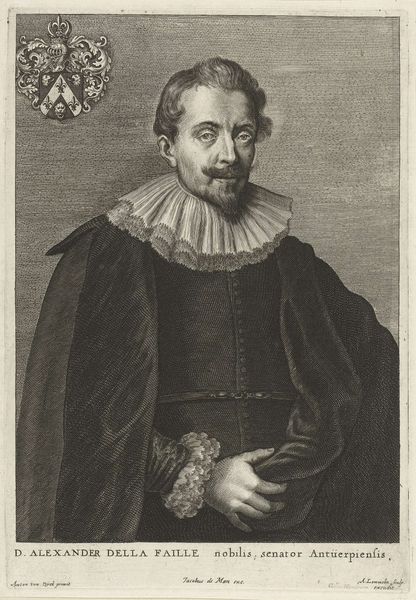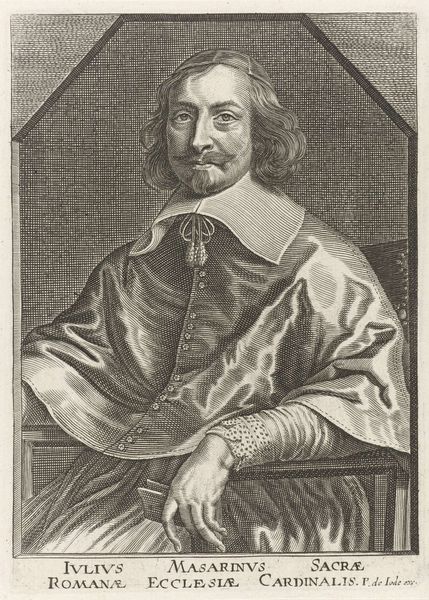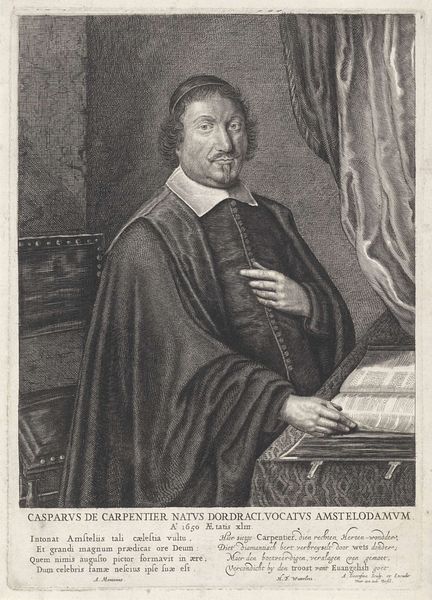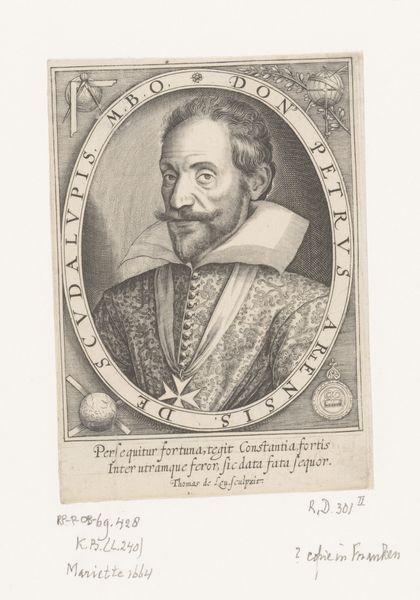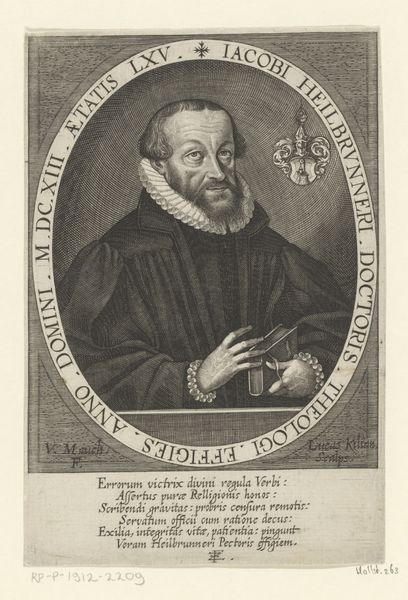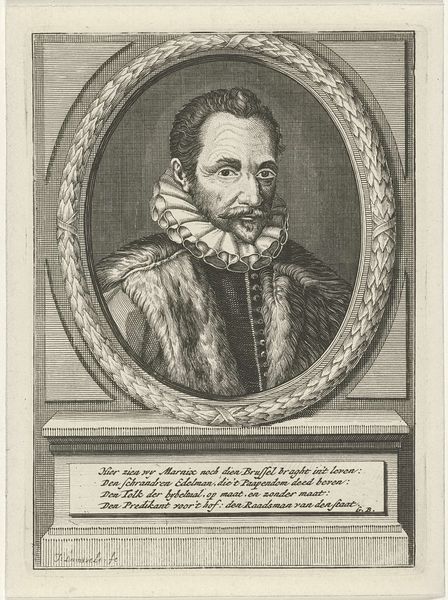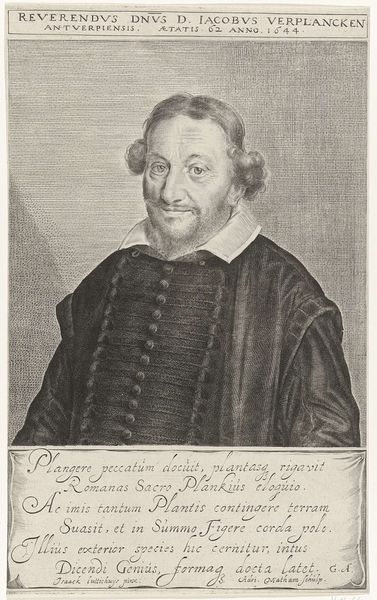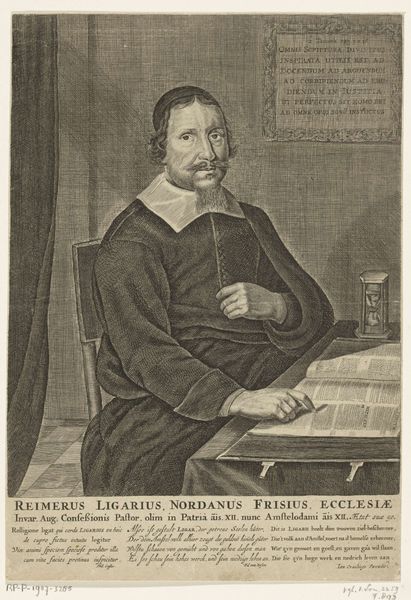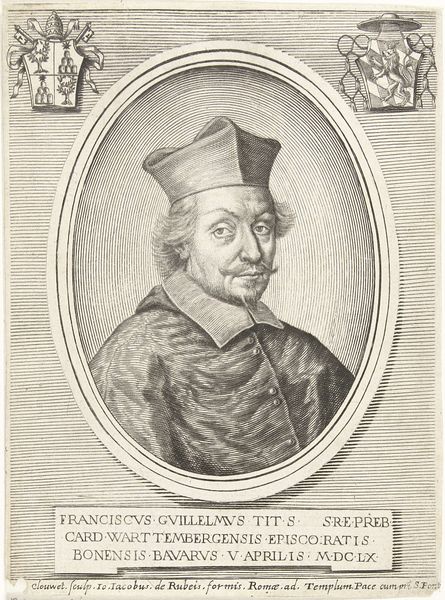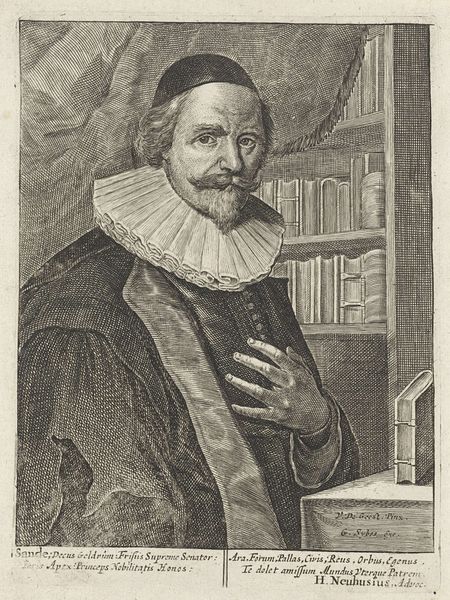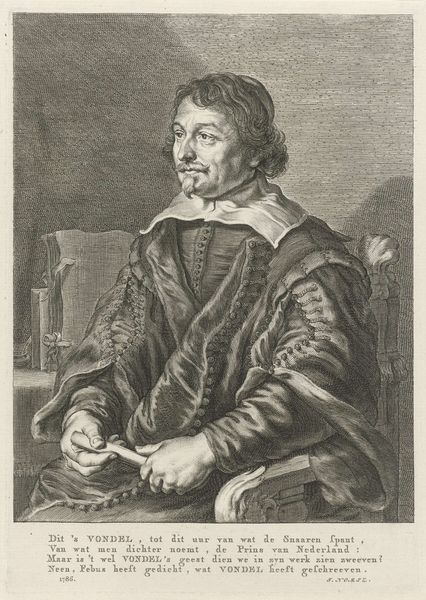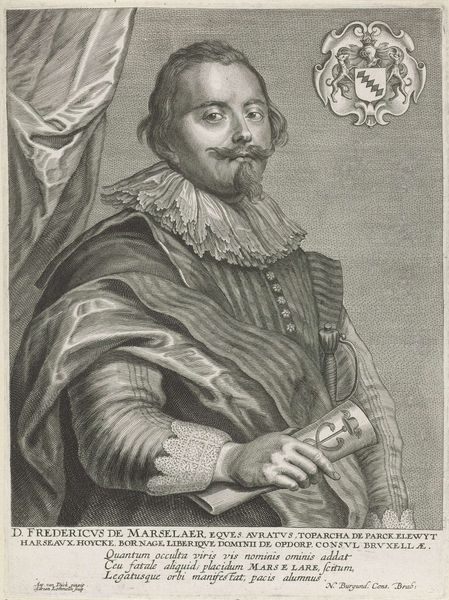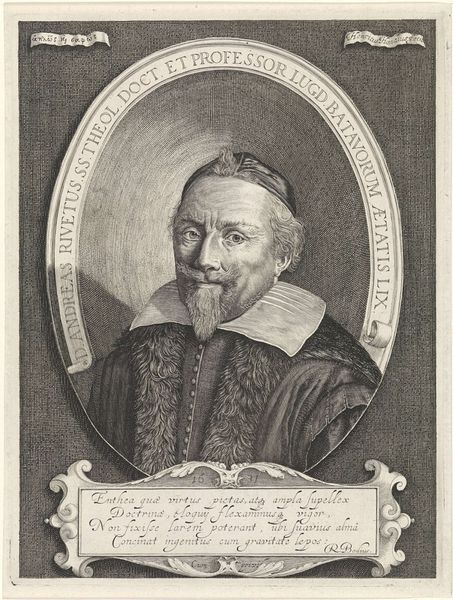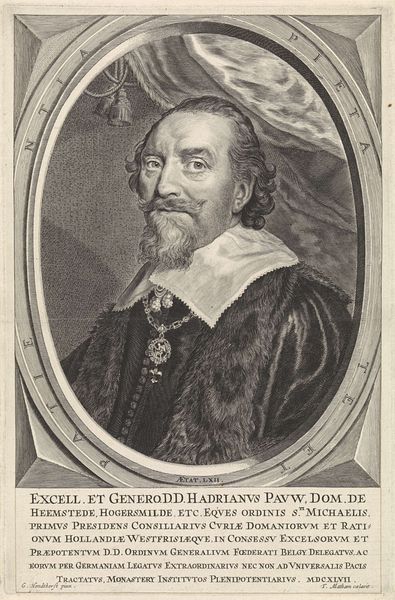
print, engraving
#
portrait
#
baroque
# print
#
old engraving style
#
portrait reference
#
line
#
history-painting
#
engraving
Dimensions: height 281 mm, width 183 mm
Copyright: Rijks Museum: Open Domain
This is a portrait of Nicolaas Fontanus, made by Crispijn van de Passe the Younger in the 17th century, using engraving. The image is built up from a dense accumulation of etched lines. Look closely and you can see how the varying weight and density of the lines create areas of light and shadow, giving the print a remarkable sense of three-dimensionality. The artist was a member of a dynasty of printmakers, whose livelihood depended on the skilled deployment of these techniques. He used a metal plate, a sharp burin, and acid, to translate the likeness of a real person into a reproducible image. The print could then be multiplied and distributed widely. Consider how the skilled labor of the printmaker intersects with the rising status of Fontanus, signified by the Latin inscription and symbolic skull. The image suggests not just an individual likeness, but also the social networks of knowledge, labor, and exchange that sustained Dutch society at this time.
Comments
No comments
Be the first to comment and join the conversation on the ultimate creative platform.
